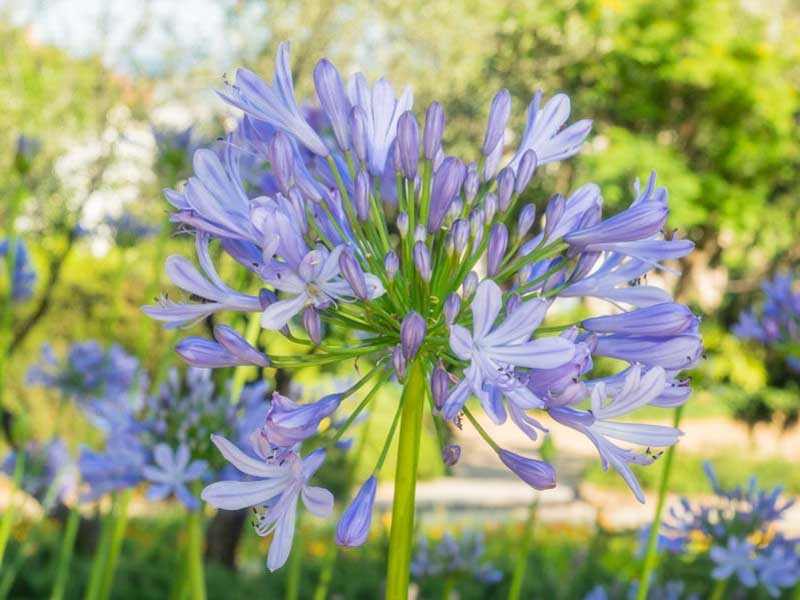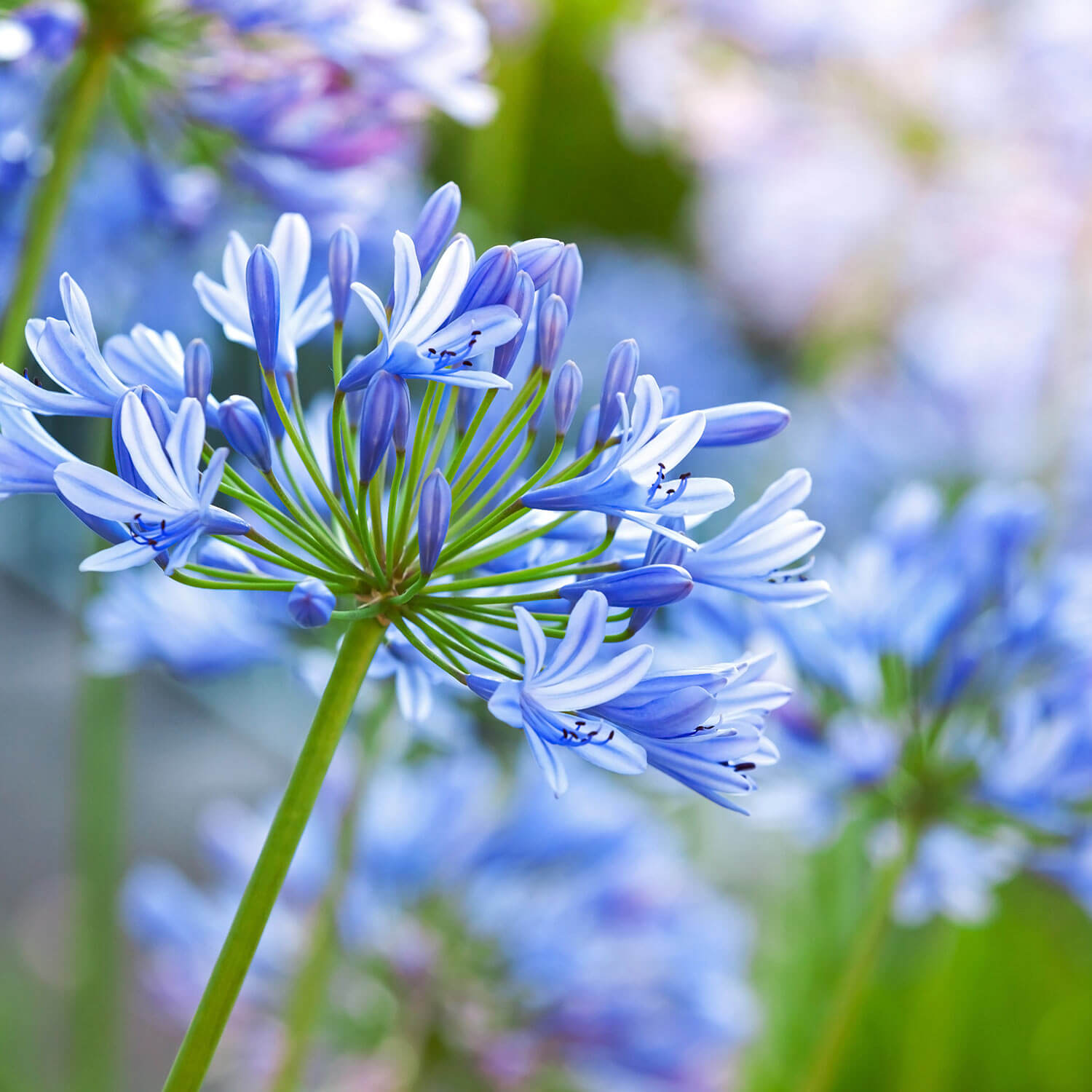Grasping the Art of Agapanthus Care: Important Steps for Healthy And Balanced Growth and Vivid Blooms
In the world of gardening, the cultivation of agapanthus stands as a rewarding endeavor for those that seek to nurture these stylish flowering plants. With their striking blossoms and graceful foliage, agapanthus has caught the attention of gardeners worldwide. However, achieving optimum growth and dynamic blossoms requires a nuanced technique that encompasses various essential actions. From picking the best selection to grasping pruning methods, the journey in the direction of cultivating thriving agapanthus plants is complex and holds the vital to unlocking the complete possibility of these organic gems.

Choosing the Right Agapanthus Selection

When choosing the ideal Agapanthus variety for your yard, think about variables such as climate suitability, blossom shade, and growth behavior. Agapanthus, generally referred to as Lily of the Nile or African lily, comes in a selection of colors ranging from shades of purple and blue to white. Choose a bloom color that matches your existing yard scheme to create an unified landscape. Additionally, take into consideration the environment in your region to guarantee the Agapanthus variety you choose can grow in your particular problems. Some ranges are extra tolerant of cold temperatures, while others like warmer climates. Recognizing the development behavior of various Agapanthus varieties is critical for correct placement within your garden. Some varieties have a clumping development habit, suitable for boundaries or containers, while others have a more dispersing nature, appropriate for ground cover or mass plantings. By thoroughly assessing these factors, you can choose the best Agapanthus selection to boost the appeal of your garden.
Ideal Planting Problems
Considering the optimum ecological needs is essential for successful Agapanthus cultivation. Agapanthus prospers in well-draining soil with a somewhat acidic to neutral pH level. When planting, select an area that gets complete sunlight to partial shade. In hotter environments, offering some afternoon shade can protect against scorching of the leaves. Agapanthus plants are sensitive to cool temperatures and must be protected from frost during cold weather.
To ensure healthy growth and vibrant blossoms, plant Agapanthus bulbs at a depth of regarding 2-4 inches and area them 8-12 inches apart. Adding natural issue, such as garden compost, to the soil can enhance water drainage and fertility, promoting robust root development. Mulching around the base of the plants helps preserve dampness and subdues weed growth. Routine watering is crucial, specifically during the growing season, to keep the dirt constantly wet however not waterlogged.
Watering and Feeding Tips
Keeping proper wetness degrees and providing crucial nutrients are key aspects in the care regimen for Agapanthus plants. It is crucial to strike an equilibrium when it comes to sprinkling Agapanthus. These plants prefer consistently wet dirt however are vulnerable to root rot if overwatered. Throughout the growing period, water deeply as soon as a week, making sure the soil is well-draining to avoid waterlogging. In hotter environments or throughout periods of dry spell, even more frequent watering might be needed to keep the soil evenly moist. Nevertheless, minimize watering in the wintertime to avoid waterlogged conditions.
Fertilizing Agapanthus is important for promoting healthy development and respected flowers. Use a balanced plant food, such as a 10-10-10 formula, in the early spring as new development arises. Repeat this application every 6-8 weeks throughout the growing season. Prevent excessive fertilizing, as it can result in lavish vegetation at the cost of flowers. Constantly comply with the maker's directions for correct dilution and application approaches. By complying with these watering and feeding ideas, you can guarantee your Agapanthus plants prosper and generate dynamic, lasting weblink blooms.
Pruning Methods for Agapanthus
Pruning Agapanthus plants at the ideal times and with appropriate methods is critical for maintaining their health and wellness and promoting optimal growth and blooming. The perfect time to prune Agapanthus remains in late wintertime or very early spring before brand-new development emerges. Begin by getting rid of any dead or yellowing fallen leaves near the base of the plant. Cut them as short as possible without harming the arising shoots.
Deadheading spent flowers can additionally redirect the plant's energy into creating even more blooms rather than setting seeds. If you desire to collect seeds for propagation, leave some blossoms to mature and completely dry on the plant.
Bear in mind to make use of clean, sharp devices to make accurate cuts and lower the danger of introducing illness. Agapanthus. Routine trimming will help maintain your Agapanthus looking neat and healthy while making certain a bountiful display screen of why not try this out gorgeous flowers
Dealing With Common Insects and Illness
After guaranteeing correct trimming strategies for Agapanthus, it is essential to address common insects and conditions that can affect the health and vitality of these plants. One usual bug that impacts Agapanthus is the Agapanthus gall midget.
Furthermore, Agapanthus plants can suffer from origin rot if they are grown in badly draining pipes dirt. By being cautious and taking timely activity against insects and illness, you can help your Agapanthus plants prosper and generate lively blooms. Agapanthus.

Final Thought
In final thought, understanding the art of agapanthus treatment includes selecting the right range, providing perfect planting conditions, proper watering and fertilizing, proper trimming strategies, and attending to usual bugs my explanation and illness. By following these crucial steps, you can make sure healthy and balanced growth and vibrant flowers for your agapanthus plants. Keep in mind to consistently keep track of and preserve your plants to advertise their general well-being and long life.
To make sure healthy and balanced growth and vibrant blossoms, plant Agapanthus bulbs at a depth of about 2-4 inches and space them 8-12 inches apart. By following these watering and feeding suggestions, you can guarantee your Agapanthus plants thrive and generate lively, lasting blossoms.
One usual bug that influences Agapanthus is the Agapanthus gall midget. In addition, Agapanthus plants can endure from root rot if they are grown in inadequately draining dirt. By adhering to these necessary actions, you can guarantee healthy and balanced development and vivid blossoms for your agapanthus plants.